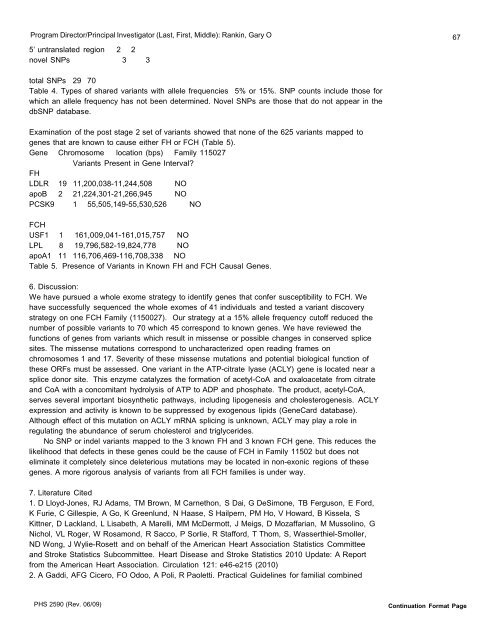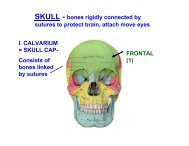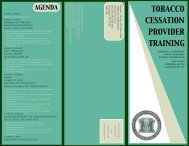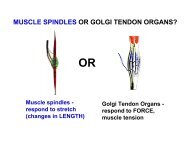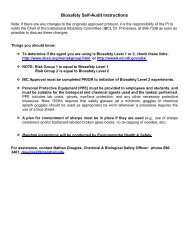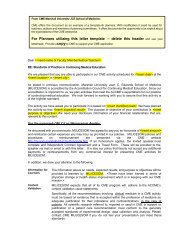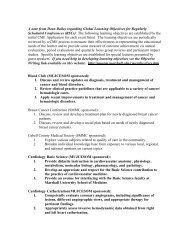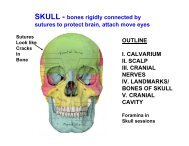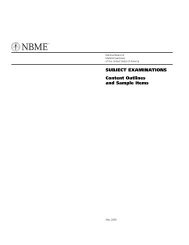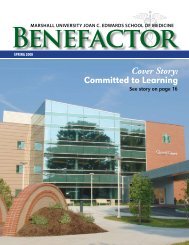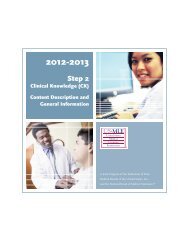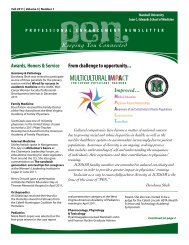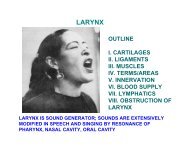FA 5 Progress Report WV-INBRE - Joan C. Edwards School of ...
FA 5 Progress Report WV-INBRE - Joan C. Edwards School of ...
FA 5 Progress Report WV-INBRE - Joan C. Edwards School of ...
- No tags were found...
Create successful ePaper yourself
Turn your PDF publications into a flip-book with our unique Google optimized e-Paper software.
Program Director/Principal Investigator (Last, First, Middle): Rankin, Gary O 675’ untranslated region 2 2novel SNPs 3 3total SNPs 29 70Table 4. Types <strong>of</strong> shared variants with allele frequencies 5% or 15%. SNP counts include those forwhich an allele frequency has not been determined. Novel SNPs are those that do not appear in thedbSNP database.Examination <strong>of</strong> the post stage 2 set <strong>of</strong> variants showed that none <strong>of</strong> the 625 variants mapped togenes that are known to cause either FH or FCH (Table 5).Gene Chromosome location (bps) Family 115027Variants Present in Gene Interval?FHLDLR 19 11,200,038-11,244,508 NOapoB 2 21,224,301-21,266,945 NOPCSK9 1 55,505,149-55,530,526 NOFCHUSF1 1 161,009,041-161,015,757 NOLPL 8 19,796,582-19,824,778 NOapoA1 11 116,706,469-116,708,338 NOTable 5. Presence <strong>of</strong> Variants in Known FH and FCH Causal Genes.6. Discussion:We have pursued a whole exome strategy to identify genes that confer susceptibility to FCH. Wehave successfully sequenced the whole exomes <strong>of</strong> 41 individuals and tested a variant discoverystrategy on one FCH Family (1150027). Our strategy at a 15% allele frequency cut<strong>of</strong>f reduced thenumber <strong>of</strong> possible variants to 70 which 45 correspond to known genes. We have reviewed thefunctions <strong>of</strong> genes from variants which result in missense or possible changes in conserved splicesites. The missense mutations correspond to uncharacterized open reading frames onchromosomes 1 and 17. Severity <strong>of</strong> these missense mutations and potential biological function <strong>of</strong>these ORFs must be assessed. One variant in the ATP-citrate lyase (ACLY) gene is located near asplice donor site. This enzyme catalyzes the formation <strong>of</strong> acetyl-CoA and oxaloacetate from citrateand CoA with a concomitant hydrolysis <strong>of</strong> ATP to ADP and phosphate. The product, acetyl-CoA,serves several important biosynthetic pathways, including lipogenesis and cholesterogenesis. ACLYexpression and activity is known to be suppressed by exogenous lipids (GeneCard database).Although effect <strong>of</strong> this mutation on ACLY mRNA splicing is unknown, ACLY may play a role inregulating the abundance <strong>of</strong> serum cholesterol and triglycerides.No SNP or indel variants mapped to the 3 known FH and 3 known FCH gene. This reduces thelikelihood that defects in these genes could be the cause <strong>of</strong> FCH in Family 11502 but does noteliminate it completely since deleterious mutations may be located in non-exonic regions <strong>of</strong> thesegenes. A more rigorous analysis <strong>of</strong> variants from all FCH families is under way.7. Literature Cited1. D Lloyd-Jones, RJ Adams, TM Brown, M Carnethon, S Dai, G DeSimone, TB Ferguson, E Ford,K Furie, C Gillespie, A Go, K Greenlund, N Haase, S Hailpern, PM Ho, V Howard, B Kissela, SKittner, D Lackland, L Lisabeth, A Marelli, MM McDermott, J Meigs, D Mozaffarian, M Mussolino, GNichol, VL Roger, W Rosamond, R Sacco, P Sorlie, R Stafford, T Thom, S, Wasserthiel-Smoller,ND Wong, J Wylie-Rosett and on behalf <strong>of</strong> the American Heart Association Statistics Committeeand Stroke Statistics Subcommittee. Heart Disease and Stroke Statistics 2010 Update: A <strong>Report</strong>from the American Heart Association. Circulation 121: e46-e215 (2010)2. A Gaddi, AFG Cicero, FO Odoo, A Poli, R Paoletti. Practical Guidelines for familial combinedPHS 2590 (Rev. 06/09)Continuation Format Page


